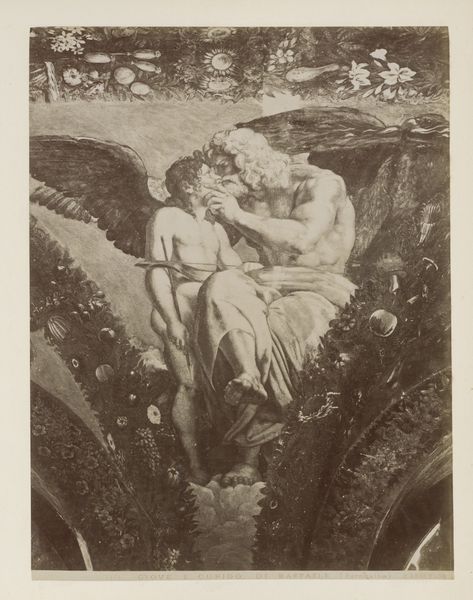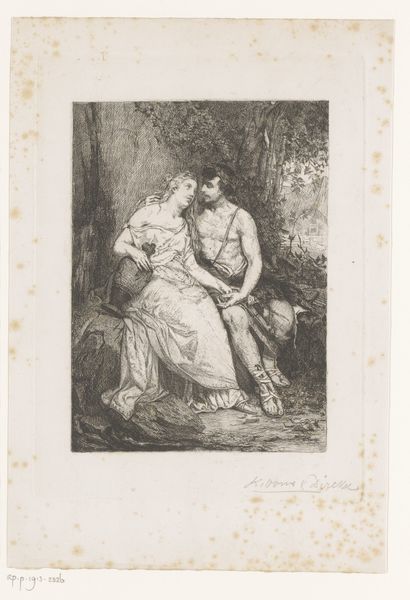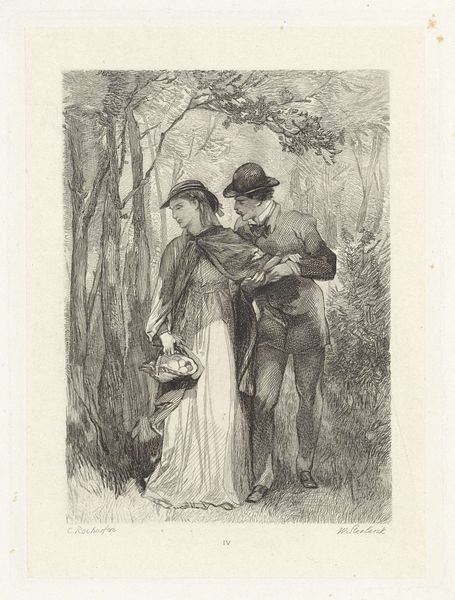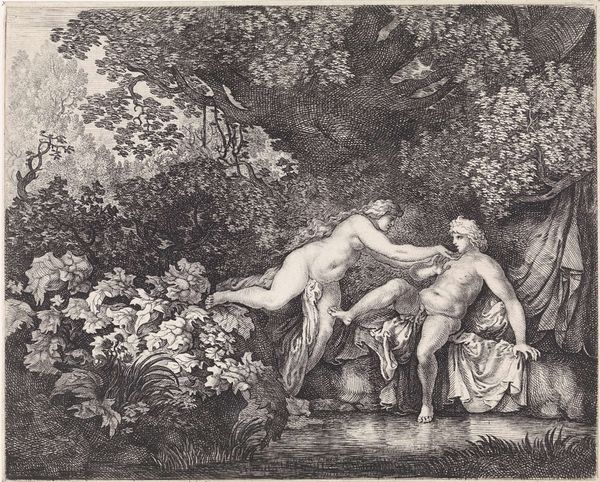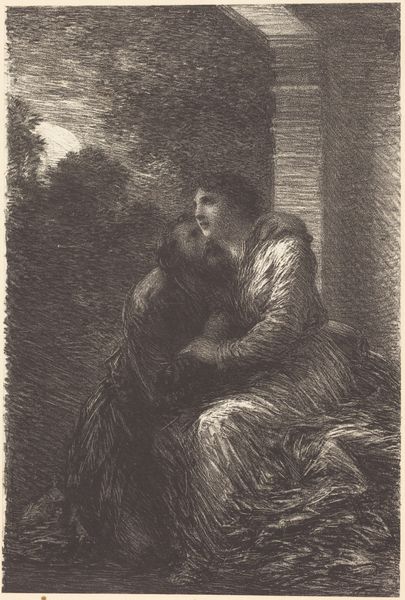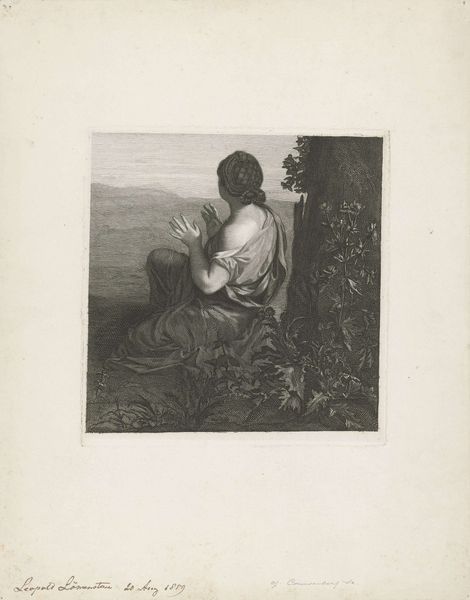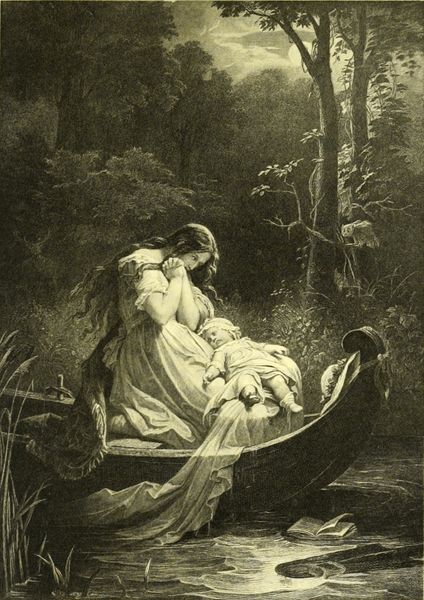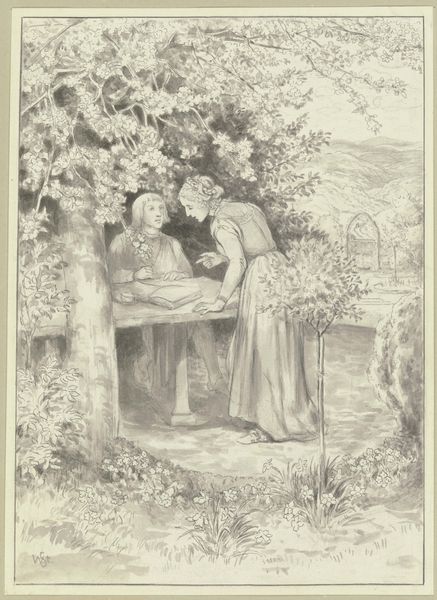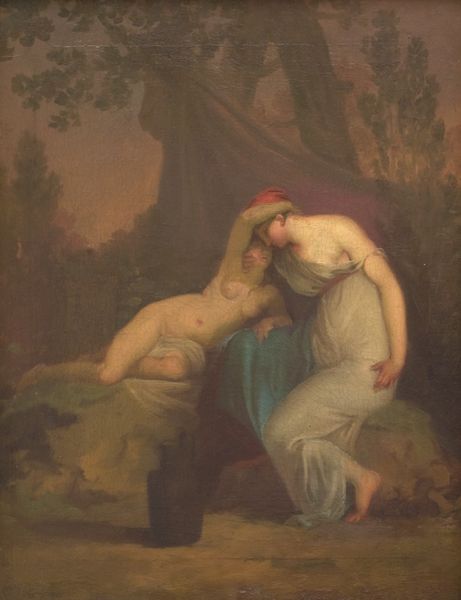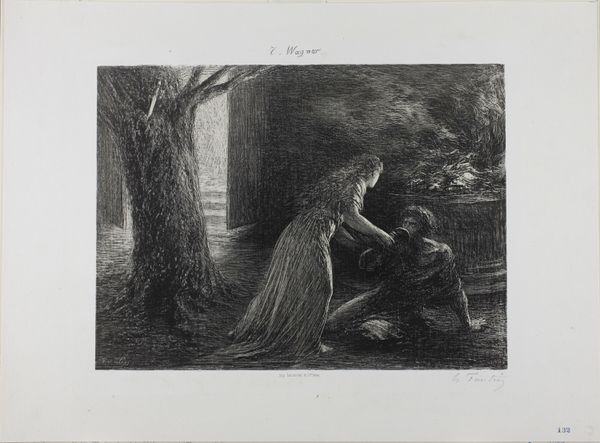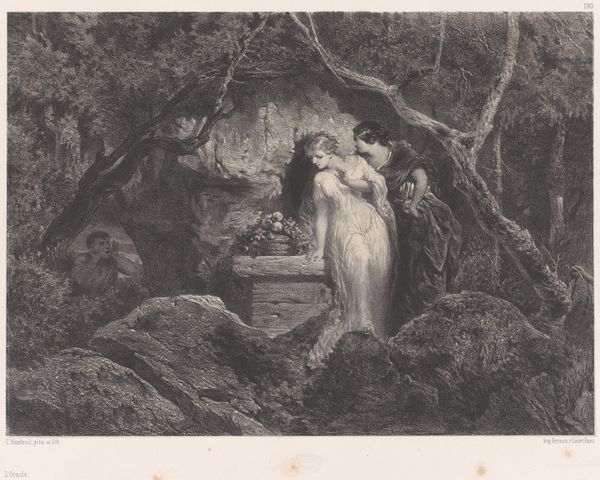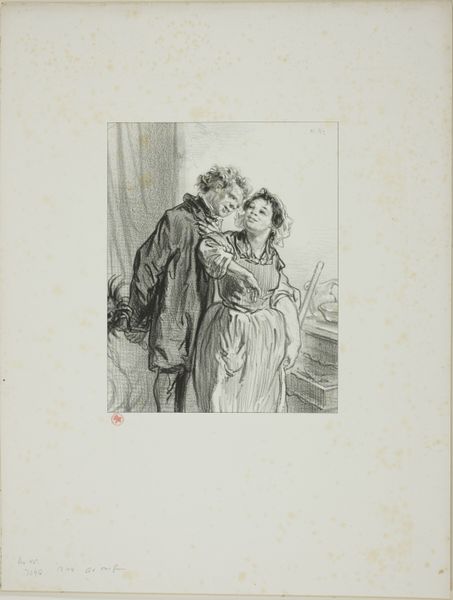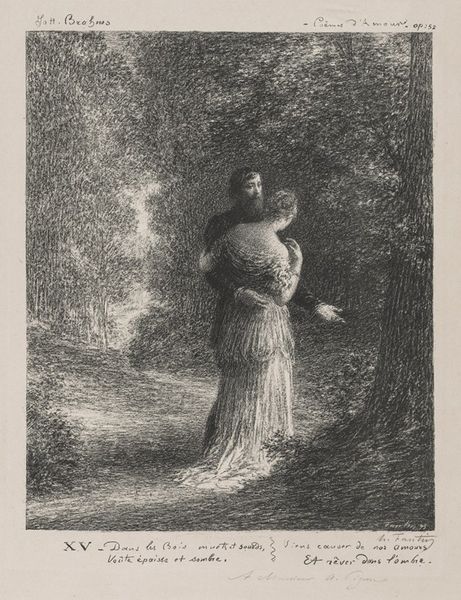
print, etching, engraving
#
portrait
#
narrative-art
# print
#
etching
#
symbolism
#
genre-painting
#
graphite
#
engraving
#
erotic-art
Copyright: Public domain
Curator: Max Klinger's "Kiss," specifically Opus X from the series "A Love," completed in 1903. The primary mediums are etching and engraving. Editor: My initial impression is one of quiet intimacy, almost secretive. The close framing forces a sense of voyeurism, drawing me into a tender moment but it also seems overwhelmingly…dense. Curator: I find the composition intriguing. Notice how the tree trunk acts as a solid vertical anchor, sharply contrasting with the entwined figures. Klinger masterfully plays with light and shadow, especially in the textured gradations describing the bark. Semiotically, the trunk serves as the backbone to hold this tender and intimate moment from collapsing into disarray and chaos. Editor: Exactly, this isn't just about youthful romance but something deeper—perhaps a union rooted in nature. Tree imagery recurs often in art history representing interconnectedness, growth, family but the symbolism of it embracing them both speaks to how integral love is to our survival and happiness. They almost melt into the surroundings. And their placement atop the stone railing indicates boundaries and limitations. Is the symbol of that fence that love needs rules or is this kiss a rebellion against society. Curator: Good point. Furthermore, look closely at the precision of the engraving and how he manages such subtle gradations of light and shadow using line and cross hatching! These two figures embrace to create this vertical axis of intense emotional outpouring while that intense concentration is balanced with how they merge with the soft vegetal surroundings that further heighten the image through contrast. This demonstrates great understanding of space and visual syntax to convey its symbolism and intent to audience’s conscious observation and experience. Editor: Agreed. Considering the cultural context, remember that the Symbolist movement emphasized subjective emotion, dreams and mysticism. Erotic and dreamlike qualities were considered the gateway to profound ideas. This is not simply an etching; it’s a window into hidden, potent desires, reflecting not only Klinger’s inner world, but also the subconscious anxieties of the age. It almost mirrors Freud’s interpretations of subconscious dreams. Curator: An insightful connection! Seeing this etching through those psychoanalytical frames of references gives a new perspective that enriches formal values and meanings and I never would’ve made that association otherwise! Editor: Yes and with Klinger and German symbolism from this moment in time, eroticism became a crucial means to confront repressed feelings and fears about what it meant to exist. This gives new ways of approaching Klinger’s formal arrangements and methods of production. Curator: Thank you, this new awareness in context has broadened and added profound layers that allows one to appreciate even deeper this seemingly sentimental moment from Max Klinger! Editor: Absolutely, considering context opens new perspectives, just as revisiting the purely visual reminds me that there’s always so much more beneath what one at first recognizes in familiar archetypes like this image!
Comments
No comments
Be the first to comment and join the conversation on the ultimate creative platform.
